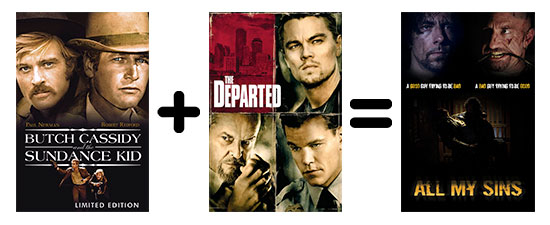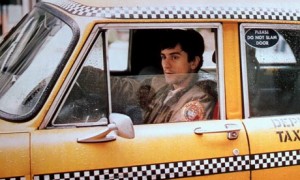As filmmakers, we all face some serious challenges when encouraging investors to finance our project. Most of these challenges stem from one simple fact:
What We’re Selling Doesn’t Exist
Think about it. Real Estate Agents have the Open House. Car Dealers have the Test Drive. Even Architects have the Conceptual Drawing. But in film, you’re selling an idea. Actually, not even that – you’re selling the promise of the execution of an idea that will almost certainly evolve during production.
Oh, and it’s not cheap. No wonder the blank cheques don’t exactly come flying at your face.
This problem of showing something that doesn’t exist is not a new one in Hollywood, and tools have been developed over time to help give form to the formless. All of these solutions can be placed under the general umbrella of The Pitch, and almost all of them begin (and often end) with the feared, hated, maligned but absolutely essential log line. A log line is really nothing more than a one sentence description of the story.
Rocky (1976) – A small time boxer gets a once in a lifetime chance to fight the heavyweight champ in a bout in which he strives to go the distance for his self-respect.
Star Wars (1977) – Luke Skywalker, a spirited farm boy, joins rebel forces to save Princess Lela from the evil Darth Vader, and the galaxy from the Empire’s planet-destroying Death Star.
Not bad. But really, barely suggestive of the breathtaking films they were meant to describe. Seriously, ‘a spirited farm boy’?
The Purge (2013) – A family is held hostage for harboring the target of a murderous syndicate during the Purge, a 12-hour period in which any and all crime is legalized.
This one’s a little better. Why? Because that’s pretty much the whole movie. The Purge was built from the log line, and it didn’t stray far from it. With a $3 million budget and a Box Office in excess of $100 million, clearly there’s something to be said for having a concept that’s easy to describe. But the real problem with log lines is this – if your movie has anything more than a couple of sentences worth of fantastic, they’re severely limiting.
All My Sins (Soon) - When an undercover cop joins forces with an enforcer to bring down the man they hate, he discovers the price for justice may be more than he’s willing to pay.
That’s the core of our story, and it’s great, but we know that AMS will be more than what this sentence can convey. Much more. So, how do we help potential investors to see the movie as we do? We could try the old ‘movie meets movie’ approach, but that’s not generally a very good idea. Why? We could accurately describe All My Sins as Butch Cassidy and the Sundance Kid meets The Departed, because it takes the us-against-the-world pairing of two dangerous, capable guys you can’t stop watching and traps them in a gritty world of greed, corruption and revenge.  BUT… what if your investor hasn’t seen the films you’re referencing? Or worse yet, hated one of them?
BUT… what if your investor hasn’t seen the films you’re referencing? Or worse yet, hated one of them?
Even if he or she saw and liked them both, there’s nothing to stop said investor from concluding that you’re making a movie about cowboys in Boston.
Nonetheless, this was the preferred method of describing a film concept right through the 90′s and is still regularly employed today, with varying levels of success. Luckily, we now live in the future. These, as Simon says (oh yes, I did) really are the days of miracles and wonder.
Thanks to digital media access and manipulation capabilities, and especially thanks to the proliferation of non-destructive, non-linear editing software like Adobe Premier, Final Cut (that’s what I use), Avid and even iMovie, not to mention all of the free software out there that will get the basic job done, there are some new and very effective avenues available to give shape to the incorporeal.
I’d like to talk about two of the more useful pre-visualization (or pre-viz, for those in a hurry) tools to come out of this paradigm e-shift, each a powerful arrow for any indie film maker to have in his e-quiver. Because there’s a lot to cover, and because I’ve already taken a fair amount of your time, I’ll be splitting this discussion into two posts. In this one, we’ll take a brief look at the…
1) Look Book
This is very fun to say. Try it. See? It is also fun to put together.
The fashion industry has been using the Lookbook longer than they’ve been using impossibly skinny models. Which is to say a very long time.
Boy. Yeah, she’s pretty skinny. Look Books are the bread and butter of the fashion world (not that you’d ever see bread or butter anywhere near the place) because all they require really is a model, some fashion and a photographer, none of which I imagine are ever much more than a few feet away.
But the Look Book’s presence in Hollywood has historically been much more sketchy. Literally. Art Directors, Costume Designers and Storyboard Artists have used drawings to bring their visions to life, but their utility has been almost exclusively internal. These images, sometimes brilliantly rendered, are circulated within and between departments as a way of expressing the inexpressible, that which cannot adequately be described with words alone. But these drawings, however wonderful, simply are not ready for prime time. And they take a lot of talent ($) and time ($$) to create. Remember, the pitch to investors is a first step in the acquisition of $$$, and spending what you don’t got is a chump move. I think that’s even in the bible somewhere, although I can’t be sure.
What the film industry, especially the indie film industry, needed was an easy, cheap way to develop images like this when you didn’t yet have an Art Director, Costume Designer or Story Board Artist. That’s when the future happened in the form of the internet, and gave them not only an endless supply of cats, but an endless supply of movie stills. Many of you reading this may not remember how difficult it was to come up with one of these things before the digital revolution (yes, there was a revolution – sigh – never mind). You literally had to buy one from the studio. And they’d mail it to you. Describing this world we used to live in is making me feel anxious.
“Suddenly, there is a change.” Travis Bickle, Taxi Driver
And just like that, if I want a still from Taxi Driver, say, one where Travis is sitting in his cab staring at Betsy…
That took me 20 seconds. And I enjoyed a sip of my perfectly prepared Americano while doing it.
The expression ‘the world is my oyster’ may be one I’ve never understood, but I believe it applies here. Suddenly, anybody with an imagination and the ability to tell a story (which better be you if you expect people to invest in your project) has access to the raw materials to make a Lookbook that means something to everyone you show it to. And that can be pretty darn helpful.
It was a lot of fun putting ours together, and as is usually the case in any aspect of film making, it was a collaborative effort. We were lucky enough to have access to what I think are stunning photographs of our city, taken and modified by our very own Randy Brososky, and used them to what we hope is great effect. I doubt that you’ve ever seen E-Town presented quite like this. I think it’s exciting. I came up with the rest of the shots, Jillian gave it structure and kept us moving forward, we all put in our two cents and Randy did the final layout.
We’re about to go live with the All My Sins Look Book, and if you’ve liked our page you’ll be one of the very first to get a look at it.
We really are interested in what you think of our creation, and what you think of the Look Book concept in general. We hope that it gives you a little better idea of what our cloud will eventually become.
And keep an eye out for the 2nd part of this Blog, where I talk about an even more powerful indie pre-viz tool: The Pitch Trailer.
Your pal,
Mark





